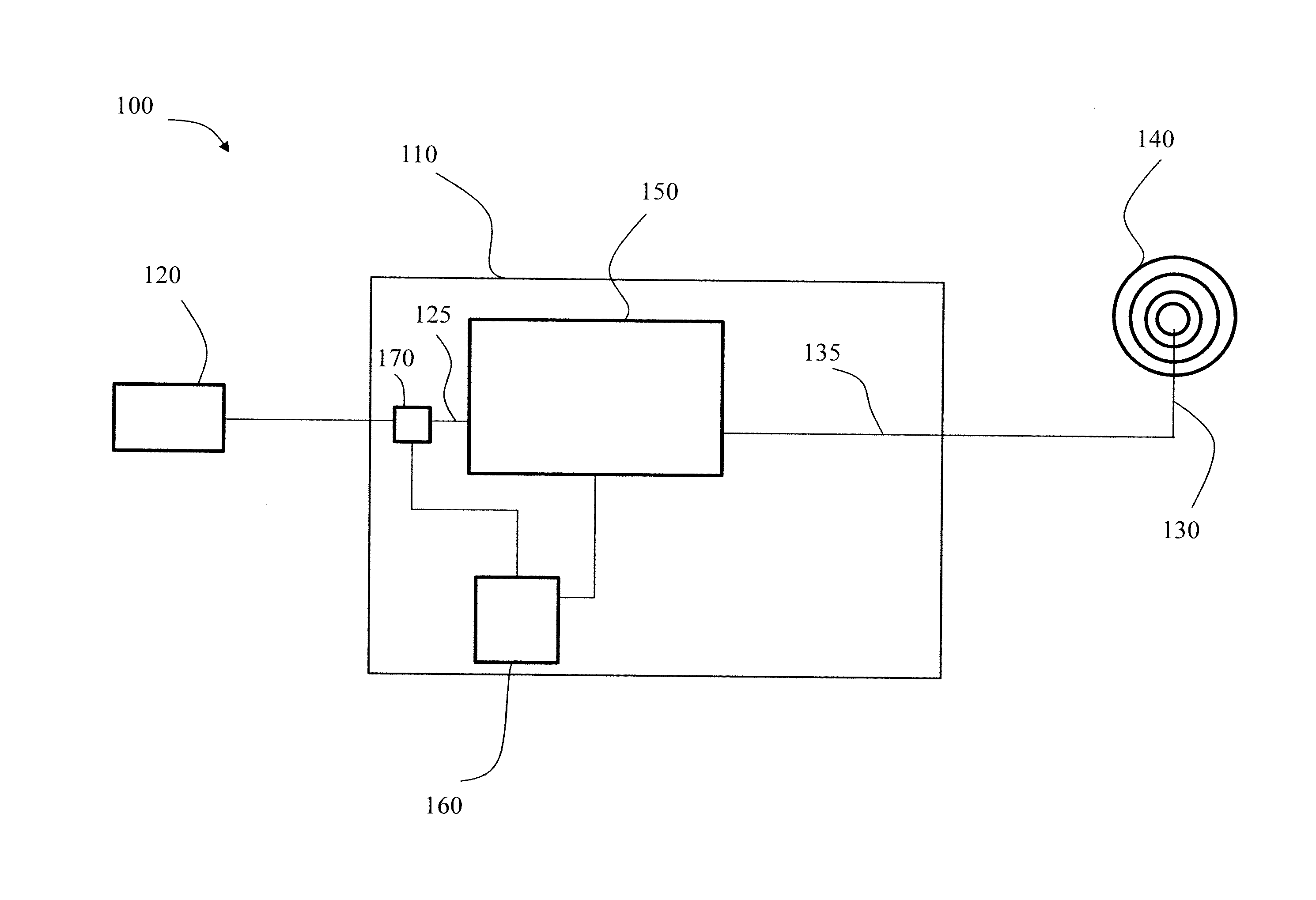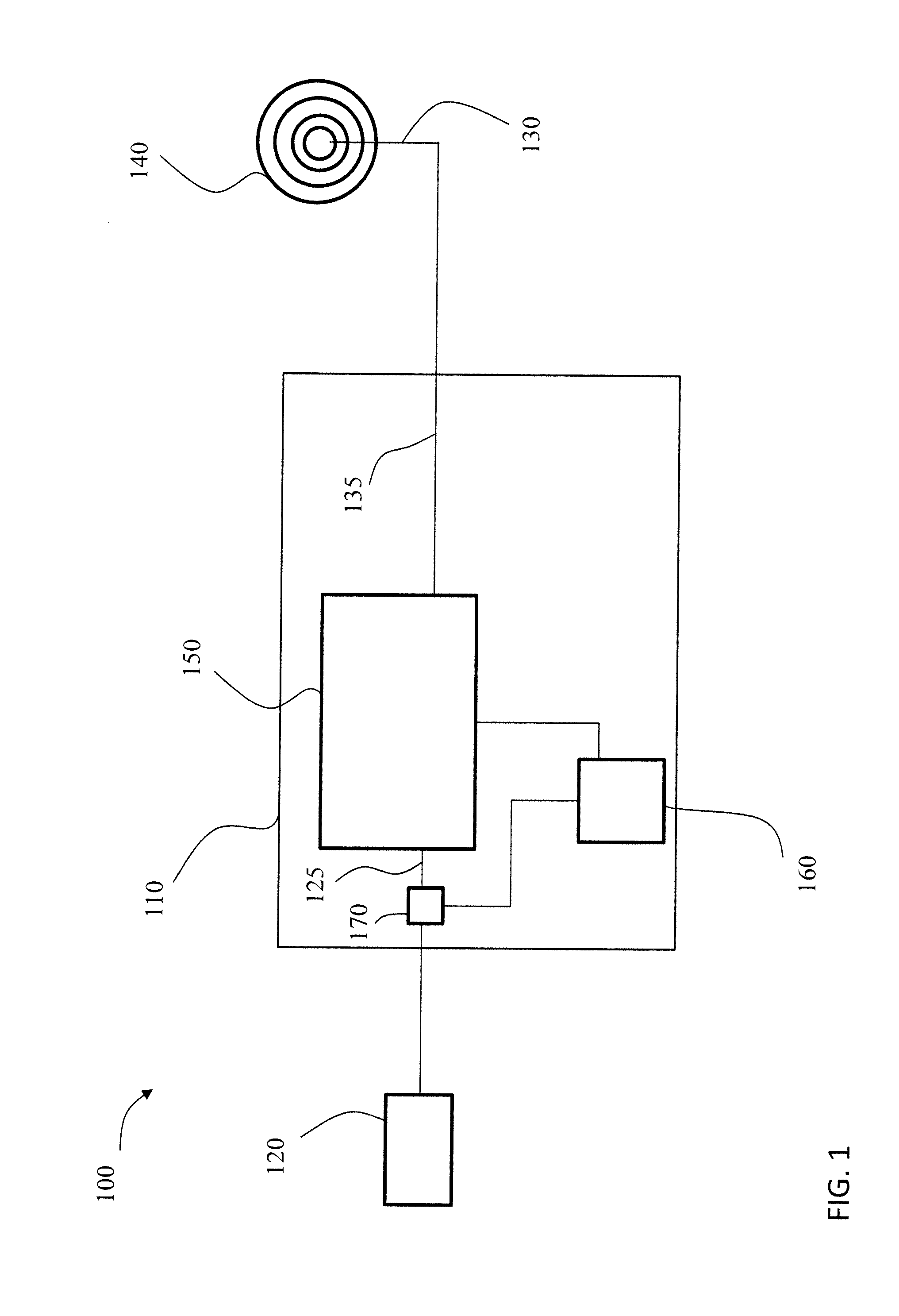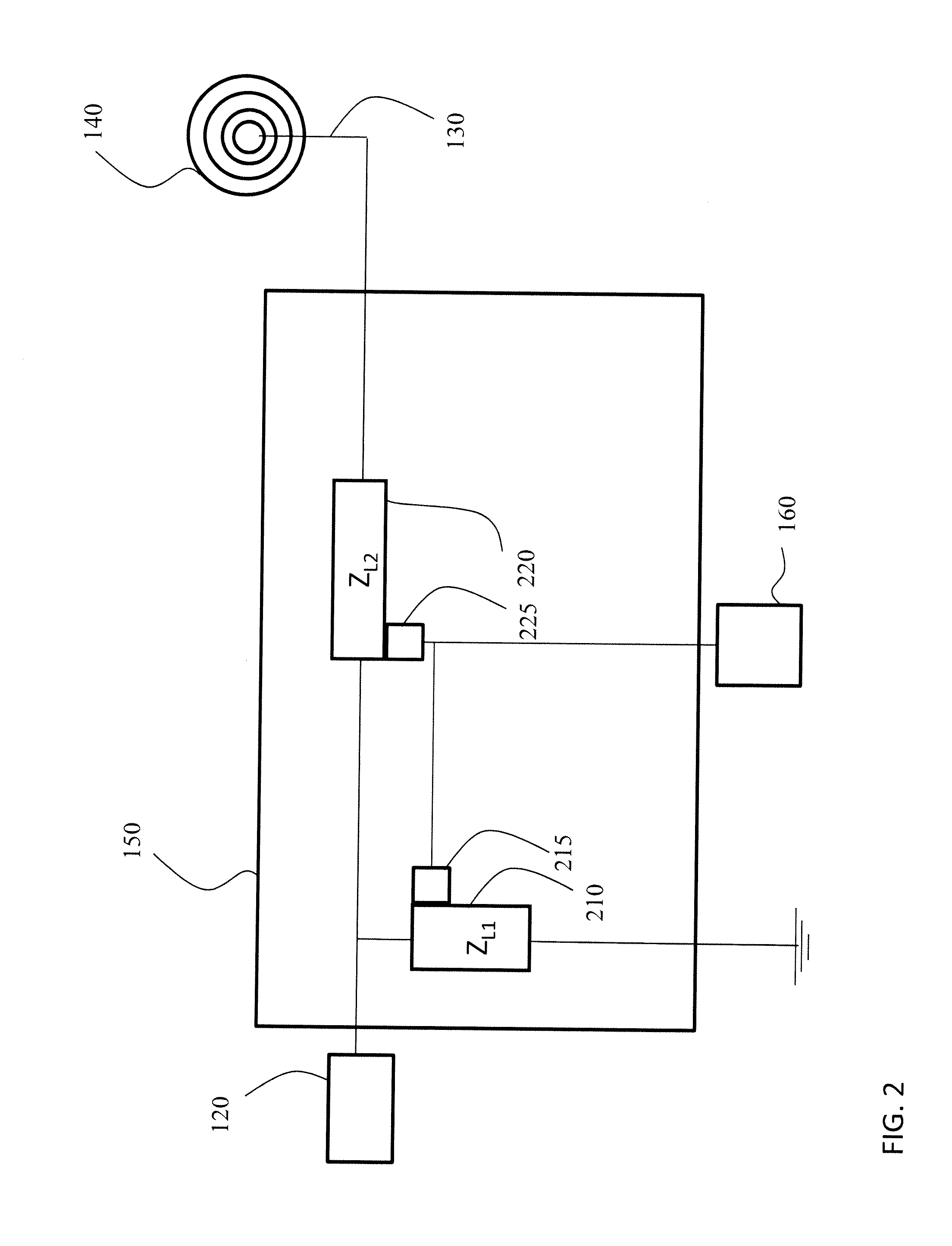Antenna Tuning Unit
- Summary
- Abstract
- Description
- Claims
- Application Information
AI Technical Summary
Benefits of technology
Problems solved by technology
Method used
Image
Examples
Embodiment Construction
[0044]In aspects, the present invention is related to a radio communication. Specifically, the present invention is related to antenna tuning units for impedance matching between a transmitter and an antenna, wherein the impedance matching network is an L-type configuration with only noncapacitive impedance elements. The present invention is also related to an antenna tuning unit configured to provide feedback to the transmitter regarding field strength of an antenna signal corresponding to the transmitter's output. The present invention is also related to an antenna tuning unit configured for tuning the antenna using a built in signal generator when the transmitter is turned off or not connected. The present invention is susceptible to embodiments of different forms. There are shown in the drawings, and herein will be described in detail, specific embodiments with the understanding that the present invention is to be considered an exemplification of the principles and is not intend...
PUM
 Login to View More
Login to View More Abstract
Description
Claims
Application Information
 Login to View More
Login to View More - R&D
- Intellectual Property
- Life Sciences
- Materials
- Tech Scout
- Unparalleled Data Quality
- Higher Quality Content
- 60% Fewer Hallucinations
Browse by: Latest US Patents, China's latest patents, Technical Efficacy Thesaurus, Application Domain, Technology Topic, Popular Technical Reports.
© 2025 PatSnap. All rights reserved.Legal|Privacy policy|Modern Slavery Act Transparency Statement|Sitemap|About US| Contact US: help@patsnap.com



